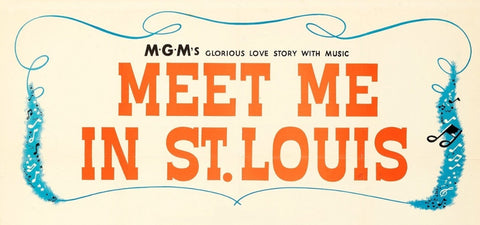
“Roger Ebert loved movies” is the simple epitaph over at Rogerebert.com. It might seem like stating the obvious when talking about a person who spent almost half a century writing about cinema, yet few critics revealed their love for film in every word the way Ebert did. He never phoned it in, and each review clearly came from the heart.
There are still plenty of great writers out there producing quality criticism since Ebert’s passing in 2013, but none have quite got close to his standing or influence. Perhaps no-one will, now the field is diluted by Rotten Tomatoes and millions of bloggers chipping in with their reviews. I guess in the UK, the closest equivalent would be Mark Kermode in terms of popular reach and opinionated criticism.
For aspiring critics, there is no greater teacher. Here are three things his writing has taught me over the years:
2. Don’t show off. Or at least, not all the time. Ebert’s writing was simple and accessible, with a forthright style that enabled him to convey many complex ideas about cinema in a way that even the most casual film buff could understand. He wasn’t trying to impress readers with fancy writing, because he just wanted to get his thoughts across to as many people as possible. That’s not to say he wouldn’t get creative from time to time; one of my least favourite Ebert pieces was when he took apart Wet Hot American Summer in the style of that old “Hello Muddah, Hello Faddah” song. It’s okay to mix it up occasionally, but accessibility should be the goal.
3. Don’t be afraid to get personal. Ebert wrote with wisdom and sincerity, and reading his reviews feels like a conversation with a friendly, knowledgeable uncle. His style was highly subjective, often using personal anecdotes to explain his stance on a movie or provide insight into how he approached it. He wasn’t afraid to make himself part of the review, which was something I was afraid of at first. Surely the reader came to find out about the movie, not about me, right? But now I think balanced subjectivity makes you more approachable and trustworthy, especially if you’re willing to put a little of yourself on the line too.
Ebert reviewed hundreds of movies each year and he changed the way regular people thought about film criticism. First, he made his name in Chicago with the Sun-Times before reaching millions on TV with fellow critic Gene Siskell, with whom he shared a prickly relationship. Eventually he went global with the dawn of the internet.
Ebert received a Pulitzer for his writing in 1975, becoming the first film critic to win the prize. Thirty years later, he also became the first critic to earn a star on the Hollywood Walk of Fame.
After suffering cancer, surgeons removed Ebert’s lower jaw, leaving him without speech and feeding through a straw for the rest of his life. Despite this, he stayed upbeat and philosophical, working right up to his death in 2013. His passion for movies kept going until the very end. A few years before he passed away, he wrote:
“I know it is coming, and I do not fear it, because I believe there is nothing on the other side of death to fear. I hope to be spared as much pain as possible on the approach path. I was perfectly content before I was born, and I think of death as the same state. What I am grateful for is the gift of intelligence, and for life, love, wonder, and laughter. You can't say it wasn't interesting. My lifetime's memories are what I have brought home from the trip. I will require them for eternity no more than that little souvenir of the Eiffel Tower I brought home from Paris.”
In 2012, he submitted his final Top 10 list of the greatest films of all time to Sight and Sound. Let’s take a look at the first five of those films.
2001: A Space Odyssey (1968)
Even amongst Stanley Kubrick’s incredible body of work, 2001: A Space Odyssey stands alone. Charting mankind’s evolution across 4 million years and our first tentative steps out into the solar system, it is a sci-fi epic that is both humbling and transcendent. Our tiny place in the universe seems daunting when set against the vast backdrop of the stars, but each viewing provokes a sense of wonder at our existence, our uniqueness among all the species on our little planet, and our potential to reach greater things.

To call 2001 science fiction sometimes feels a little reductive because it exists in a meditative place beyond genre, and even cinema itself. Newcomers to the film expecting a straightforward space exploration narrative may find themselves disappointed, or even a little bored. It’s a work of art that should be approached like a symphony, as the prominent use of classical music throughout the film suggests.
In his Great Movies piece on 2001, Ebert recalls the premiere in Los Angeles in 1968, which baffled some audience members including Rock Hudson, who marched out early grumbling, “will someone tell me what the hell this is about?”
It’s a film that doesn’t spell things out for you, and it requires work from the viewer to access all its treasures. If you’re not actively trying to interpret its enigmatic message for yourself, you’re just looking at pretty pictures and listening to nice music. The nominal story is merely a jumping off point for a masterpiece that must be experienced, felt, absorbed, and pondered over.
Ebert wrote:
“Only a few films are transcendent, and work upon our minds and imaginations like music or prayer or a vast belittling landscape. Most movies are about characters with a goal in mind, who obtain it after difficulties either comic or dramatic. 2001: A Space Odyssey is not about a goal but about a quest, a need. It does not hook its effects on specific plot points, nor does it ask us to identify with Dave Bowman or any other character. It says to us: We became men when we learned to think. Our minds have given us the tools to understand where we live and who we are. Now it is time to move on to the next step, to know that we live not on a planet but among the stars, and that we are not flesh but intelligence.”
Aguirre, the Wrath of God (1972)
As he achieved wider fame and recognition, it has become commonplace to parody Werner Herzog as a fatalistic navel-gazer pontificating on mankind’s insignificance in the face of nature and the great void beyond. There is certainly an aspect of that to some of his musings. One of my favourites is the bizarre moment in Encounters at the End of the World when a penguin, apparently struck by the futility of existence, suddenly breaks from the teeming colony and marches away across the icy wastes towards certain death.

The thing that makes Herzog one of my favourite directors is his relentless inquisitiveness, which has shown little sign of slowing down as he approaches 80. He is fascinated with dreamers and adventurers, whose obsessions often throw them into direct confrontation with nature. We see it in Grizzly Man, as Timothy Treadwell’s ill-fated desire to commune with large deadly animals ends in predictable tragedy. It is also front and centre of his most famous film, Fitzcarraldo, where the eponymous rubber baron’s determination to build an opera house in the jungle drives him to attempt the impossible, dragging a steam boat over a hill from one river to another.
Herzog’s muse was Klaus Kinski and the two men shared a volatile love-hate relationship, which the director later detailed in his documentary, My Best Fiend. Their first film together was Aguirre, Wrath of God. Kinski played Gonzalo Pizarro, the Spanish conquistador who plunged into the Peruvian rainforest in search of a fabled lost city. As is often the case with such tales, the misbegotten adventure ends in bloodshed and madness, made all the more haunting and visceral by having a bona fide madman in the lead role. Fittingly, the film ends with a scene as eccentric as its mercurial star, leaving an unhinged Pizarro adrift on a raft overrun by monkeys.
“What Herzog sees in the story, I think, is what he finds in many of his films: Men haunted by a vision of great achievement, who commit the sin of pride by daring to reach for it, and are crushed by an implacable universe. One thinks of his documentary about the ski-jumper Steiner, who wanted to fly forever, and became so good that he was in danger of overshooting the landing area and crushing himself against stones and trees.”
Apocalypse Now (1978)
Five years before Herzog was really dragging a boat up a hill while filming Fitzcarraldo, Francis Ford Coppola was out in the tropics staging helicopter raids with real choppers on another famously grandiose shoot. The making of Apocalypse Now was chaotic, the stuff of dark movie-making legend; the director battled away in the Philippines for 238 days, running way over budget and beset by a wide array of problems. A typhoon wrecked his sets, his leading man suffered a heart attack, and his rented helicopters frequently darted off to participate in a real conflict… They had to keep repainting them between sorties to change their colour scheme from Filipino to American. Then there was the enigma of Marlon Brando, who arrived on set so massively overweight that Coppola could only film his face and keep the rest of his body in shadow.

When he was finished, Coppola had created the greatest “War is Hell” film ever made. Apocalypse Now is exhilarating, exhausting and deeply disturbing, but Coppola argued that it isn’t an anti-war movie. War and its accompanying atrocities are just a symptom of what it really explores; mankind’s true heart of darkness, the horror of our primal capacity for cruelty, and some men’s ability to tap into these base instincts when freed from the shackles of civilised restraint.
"Apocalypse Now is the best Vietnam film, one of the greatest of all films, because it pushes beyond the others, into the dark places of the soul. It is not about war so much as about how war reveals truths we would be happy never to discover… If we are lucky, we spend our lives in a fool's paradise, never knowing how close we skirt the abyss. What drives Kurtz [Brando] mad is his discovery of this.”
Citizen Kane (1941)
It’s stating the obvious to say that Citizen Kane is a towering cinematic achievement, all the more remarkable when you consider that Orson Welles was only 25 when he made it. Having conquered the stage and the airwaves, he was handed the keys to the kingdom of Hollywood, with the final cut on his magnum opus. He took that creative freedom and made a masterpiece that overshadows all of western cinema, like the mighty edifice of Xanadu that dominates the film’s famous opening scene.

Welles took a crash course in cinema in preparation for his first foray into feature films, reportedly watching Stagecoach every night for a month to nail John Ford’s editing style. He was a little like the Tarantino of his day, taking techniques he liked from other movies and putting them all together in a way that felt uniquely his own. Personally, it’s a film that I admire rather than love. I don’t really care about the story or the characters, but it is something I can pore over endlessly in appreciation of Welles’ treasure trove of filmmaking.
In some ways, Welles was a victim of his own brilliance and arrogance; Kane was well-received by critics but it didn’t perform well at the box office, and he was stripped of the final cut on his subsequent studio pictures. He still made many more great films, but none came close to his first and finest achievement.
“Rosebud is the emblem of the security, hope and innocence of childhood, which a man can spend his life seeking to regain. It is the green light at the end of Gatsby's pier; the leopard atop Kilimanjaro, seeking nobody knows what; the bone tossed into the air in 2001. It is that yearning after transience that adults learn to suppress. ‘Maybe Rosebud was something he couldn't get, or something he lost,’ says Thompson, the reporter assigned to the puzzle of Kane's dying word. ‘Anyway, it wouldn't have explained anything.’ True, it explains nothing, but it is remarkably satisfactory as a demonstration that nothing can be explained. Citizen Kane likes playful paradoxes like that. Its surface is as much fun as any movie ever made. Its depths surpass understanding. I have analyzed it a shot at a time with more than 30 groups, and together we have seen, I believe, pretty much everything that is there on the screen. The more clearly I can see its physical manifestation, the more I am stirred by its mystery.”
La Dolce Vita (1960)
Ebert was brilliant at bringing arthouse and world cinema to casual film buffs who wouldn’t normally look beyond what was playing at their local multiplex or the video rental shelves at their local Blockbuster. His “Great Movies'' articles were a great guide when I first started seeking out more challenging stuff, really helping me get to grips with auteurs like Bergman, Fassbinder, Ozu, Dreyer, Kielowski, and many of the usual suspects that often occupy the top spots of critics’ lists.
Despite this, two of the most well-regarded Italian masters, Fellini and Antonioni, have remained just beyond my reach. This is even more frustrating when I consider Ebert’s very personal piece about Fellini’s La Dolce Vita:
“Movies do not change, but their viewers do. When I saw La Dolce Vita in 1960, I was an adolescent for whom "the sweet life" represented everything I dreamed of: sin, exotic European glamour, the weary romance of the cynical newspaperman. When I saw it again, around 1970, I was living in a version of Marcello's world; Chicago's North Avenue was not the Via Veneto, but at 3 a.m. the denizens were just as colorful, and I was about Marcello's age.
When I saw the movie around 1980, Marcello was the same age, but I was 10 years older, had stopped drinking, and saw him not as a role model but as a victim, condemned to an endless search for happiness that could never be found, not that way. By 1991, when I analyzed the film a frame at a time at the University of Colorado, Marcello seemed younger still, and while I had once admired and then criticized him, now I pitied and loved him. And when I saw the movie right after Mastroianni died, I thought that Fellini and Marcello had taken a moment of discovery and made it immortal. There may be no such thing as the sweet life. But it is necessary to find that out for yourself.”
When I first arrived in Prague at the age of 21, I fell hard for a vision of a lifestyle comparable to Ebert’s idealised “sweet life” at the heart of the film. For a young guy suddenly set free in the city, it was a Wild East playground of endless parties, boozing, intriguing characters, and impossibly beautiful women. Switch out Fellini’s Eternal City for the haunted atmosphere of a pre-tourist-invasion city on the Vltava, and the stylish pavement cafes for crumbling beer cellars, and you have the same appeal. Prague felt like a place where anything could happen at any time and I felt dangerously smitten, as if under the spell of a fickle seductress.

Now I look back as someone older and wiser, I see that it was just an illusion. Prague was, and still is, just a city of stone. Thinking about it in such melodramatic terms jeopardised any chance of happiness I had back then. Luckily I was able to break the spell, but whenever I go back I am always wary of getting hooked again.
In short, La Dolce Vita feels like a film I should relate to, as we follow Marcello Mastroainni’s beautifully jaded gossip columnist wandering around an enchanted city in search of something that remains beyond his grasp. It’s an absorbing and wonderfully evocative ride, capturing the vital spirit of Rome in those buzzing post-war days as it transformed itself into a fashionable, modern city. Yet for whatever reason, the film still leaves me cold.
Tune in next week for Part Two of our rundown of Roger Ebert’s greatest movies!





